B2B eCommerce for Distributors: How to build effectively?
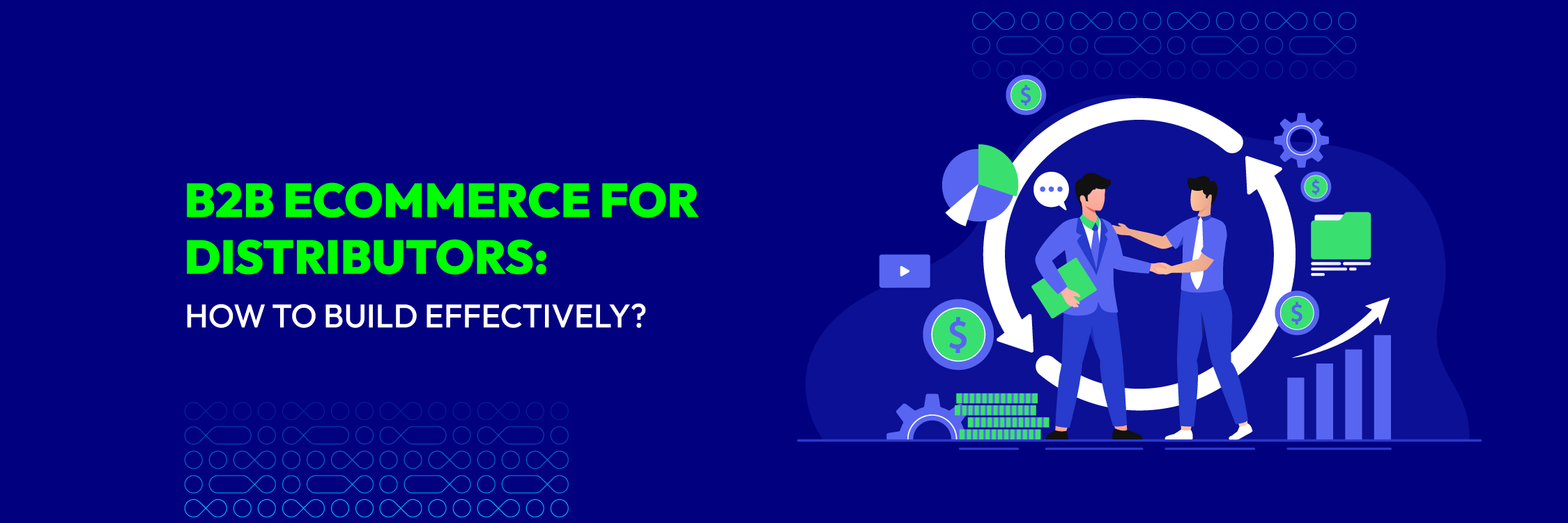
In the rapidly evolving business landscape, B2B eCommerce for distributors has emerged and grown amazingly, reshaping traditional business models and redefining customer interactions. For distributors, using eCommerce is not only an option but also a strategic imperative to stay competitive, drive growth, and deliver exceptional customer experiences. This article will explore the key role eCommerce plays for distributors and provide helpful insights into how to build and leverage an effective eCommerce platform.
Why is B2B eCommerce for Distributors?
eCommerce has become an essential avenue for distributors due to its transformative impact on business operations, customer engagement, and market expansion. The integration of eCommerce into the distribution landscape is not only a trend but also a driven strategic need. In essence, B2B eCommerce for distributors empowers to adapt, innovate and grow in an increasingly digital business landscape. By leveraging eCommerce, distributors can position themselves for sustained growth, customer satisfaction, and long-term success in a growing market.
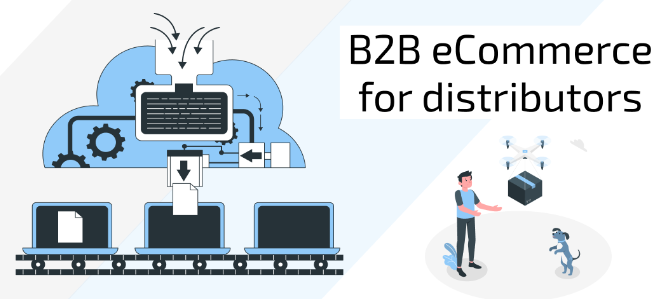
B2B eCommerce distribution: what are the benefits compared to traditional distribution?
Traditional B2B distribution, relying on paper catalogs and sales reps, is facing a digital revolution. B2B eCommerce distribution offers several advantages that can improve efficiency, customer satisfaction, and growth for distributors:
Expanded market reach
B2B eCommerce for distributors transcends geographical boundaries, enabling distributors to extend their market reach beyond traditional limitations. With an online presence, distributors can tap into new markets and customer segments that were previously inaccessible. This expanded reach can catalyze growth and diversify revenue streams.
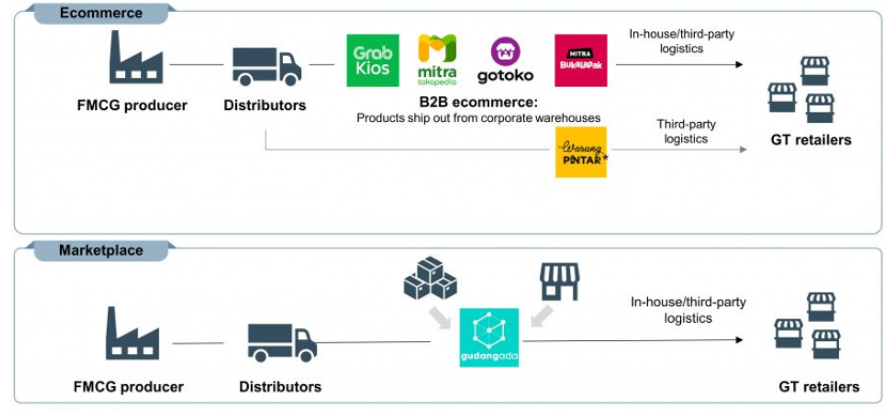
Increased sales opportunities
The digital storefront operates 24/7, allowing customers to make purchases at their convenience. This uninterrupted accessibility translates to increased sales opportunities as customers can browse, compare, and buy products whenever they prefer. Distributors can capitalize on the round-the-clock nature of eCommerce to drive revenue even outside regular business hours.
Enhanced customer experience
eCommerce platforms empower distributors to provide a seamless and personalized customer experience. Through features like product recommendations based on past purchases and user preferences, customers feel more engaged and valued. Additionally, easy navigation, detailed product descriptions, and user-friendly interfaces contribute to an enhanced overall shopping experience.
Streamlined operations and efficiency
Manual processes in traditional distribution models can be labor-intensive and prone to errors. B2B eCommerce for distributors automates various aspects of operations, from order processing to inventory management. This automation enhances efficiency, reduces human errors, and allows distributors to allocate resources more strategically.
Data-driven insights
One of the most valuable advantages of eCommerce is the data it generates. Distributors can glean insights into customer behavior, preferences, and purchasing patterns. This data-driven approach empowers distributors to tailor marketing strategies, optimize product offerings, and identify emerging trends, ultimately leading to more informed business decisions.
Scalability and adaptability
Expanding physical operations can be logistically complex and resource-intensive. eCommerce, on the other hand, offers a scalable solution. Distributors can readily expand their product offerings or target new markets without the constraints of physical infrastructure. This adaptability positions distributors to respond swiftly to market changes and seize emerging opportunities.
Cost efficiency and competitive pricing
Operating physical stores incurs costs such as rent, utilities, and maintenance. eCommerce significantly reduces these overhead expenses. Distributors can pass on these cost savings to customers, offering competitive pricing that attracts price-conscious buyers and potentially boosting sales volumes.
Marketing and brand exposure
eCommerce opens doors to digital marketing strategies, including search engine optimization (SEO), social media marketing, and content marketing. These strategies enhance brand visibility, drive organic traffic, and create a cohesive online brand presence, contributing to sustained growth and customer trust.
Customer insights for innovation
Customer feedback and interactions on eCommerce platforms provide valuable insights for product innovation and improvement. Distributors can identify gaps in the market, understand customer preferences, and launch new products or services that resonate with their target audience.
Must-have features of a B2B eCommerce site for Distributors
Advanced search functionality

Challenge: Distributors carry a vast amount of products with unique codes (SKUs), which can be overwhelming for customers searching your website.
Solution: Implementing a powerful search function helps clients easily find what they need. This enhances the user experience and positions your eCommerce business for success.
Customization
Challenge: Their product catalogs might include items with limited availability. Some products may only be sold in certain regions or to specific customer groups. Additionally, pricing and shipping options can differ based on location.
Solution: Distributors require an eCommerce platform that can handle this complexity. This platform should support its digital sales strategy by managing product availability, customer segmentation, and location-based pricing and shipping.
Product recommendations

Recommending the right products is a win-win:
- For Customers: It simplifies their shopping journey by suggesting relevant items they might need, leading to a smoother buying experience.
- For Distributors: It increases the chances of cross-selling (buying additional items) and upselling (purchasing a more premium version).
Unlike traditional shopping, online stores can leverage customer data to tailor product recommendations. This can be done on key pages like product pages, the homepage, and shopping carts. By considering factors like a customer’s location or demographics, online stores can suggest highly relevant items, boosting sales and reducing abandoned carts.
Advanced user experience
Customers make quick decisions about whether to revisit your website. If your site is engaging and attractive, they’re likely to return to explore your online store and search for products. This can lead to lower bounce rates and increased chances of making a purchase.
To cater to B2B clients, merchants should focus on enhancing their website’s user experience and interface (UX/UI). A simple design, intuitive navigation, and user-friendly interface can encourage clients to stay on the site. Additionally, merchants can enhance their content by incorporating visually appealing videos and images, which are more captivating than plain text. Opting for a platform that offers customization options both now and in the future is the optimal choice for website interface improvement.
Omni-channel
Omni-channel refers to a sales approach that encompasses multiple channels, providing customers with a seamless experience across all platforms. By adopting this strategy, businesses can gain insights into customers’ preferences and interests, allowing them to optimize their goals and messaging across various channels. As a result, customers enjoy an enhanced experience. Omni-channel capability is increasingly essential for online stores aiming for success.
Top B2B eCommerce platforms for distributors
Magento Commerce
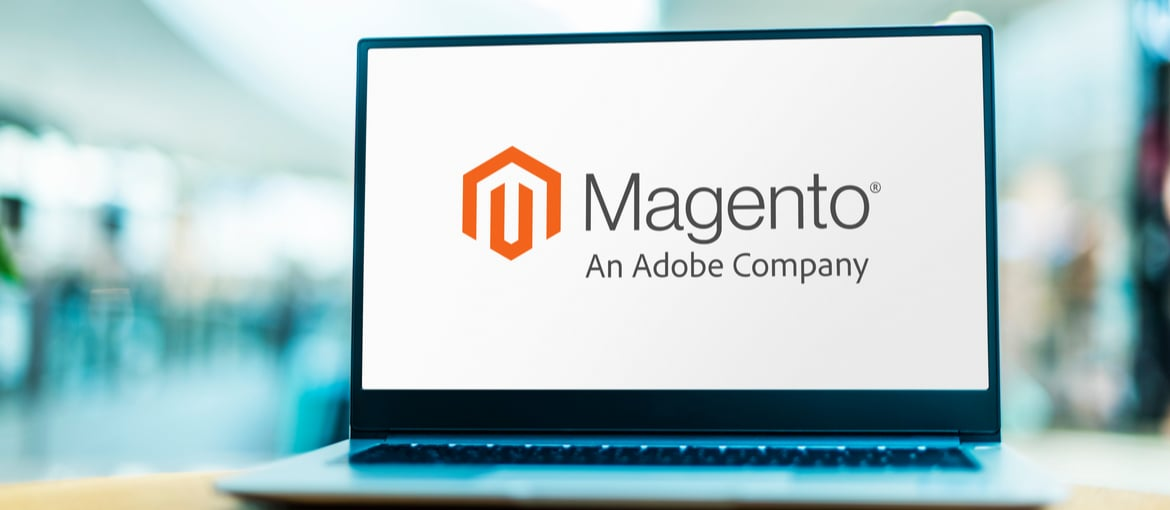
Magento Commerce is a robust platform tailored for distributors seeking to establish an impactful online presence. With its comprehensive suite of features and functionalities, Magento Commerce empowers distributors to create tailored digital experiences for their customers. From robust inventory management to seamless order processing, Magento Commerce streamlines operations, enabling distributors to efficiently manage their online stores. Additionally, its flexible architecture allows for customization to meet the unique needs of distributors, making it a preferred choice for businesses looking to thrive in the digital marketplace.
Here are the two special advantages of Magento:
- Built-in Security Tools: Magento equips your store with a Security Scan Tool to proactively identify vulnerabilities and a Security Center that provides the latest security patches and updates tailored to your specific needs.
- Advanced Compliance: As a certified PCI Level 1 Solution Provider, Magento meets the highest industry standards for protecting sensitive customer data like credit card information.
Shopify Plus

Shopify Plus caters to the needs of growing businesses, especially large enterprises, in the eCommerce space. Despite its robust feature set, it boasts a user-friendly interface that’s easy to navigate, even for those with minimal technical expertise.
Here’s what makes Shopify Plus stand out:
-
Limitless Customization: Shopify apps and partners offer a vast ecosystem of extensions and integrations, allowing you to tailor the platform to your specific needs. Additionally, features like Shopify Flow, Launchpad, and Scripts empower you to create custom automations for a seamless workflow.
-
Global Reach, Localized Experience: Manage multiple storefronts for different regions and customize the checkout experience for each. Shopify Plus also facilitates localized customer experiences, catering to international audiences with language and cultural considerations.
-
Flexibility for B2B and B2C: Shopify Plus streamlines transactions while offering a variety of options. This flexibility makes it ideal for businesses that handle both B2B and B2C sales, effortlessly accommodating fluctuations in order sizes and purchase volumes.
IBM Digital Commerce
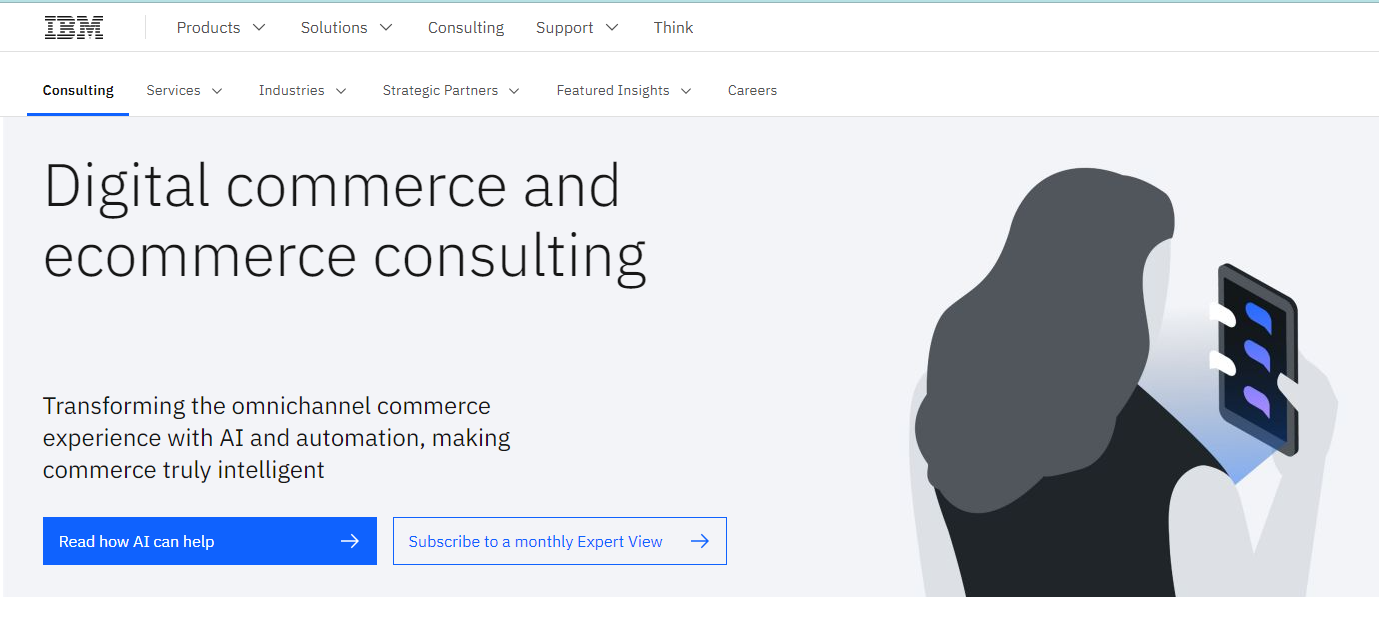
HCL Commerce (formerly IBM Digital Commerce) offers a unified platform that caters to the omnichannel needs of distributors. This means it supports sales across various channels, including:
- Traditional eCommerce websites
- Mobile apps
- Social media integration
- Even physical brick-and-mortar stores
Beyond that, HCL Commerce automates many B2B commerce tasks, including:
- Personalized Customer Service: The platform facilitates the creation of customized service offerings for individual B2B customers through contracts, payment agreements, and other relevant documents.
- Automated Document Management: HCL Commerce automates document processing and filing in real-time, ensuring all agreements are accurate and up-to-date, and significantly speeding up the process.
NetSuite Commerce
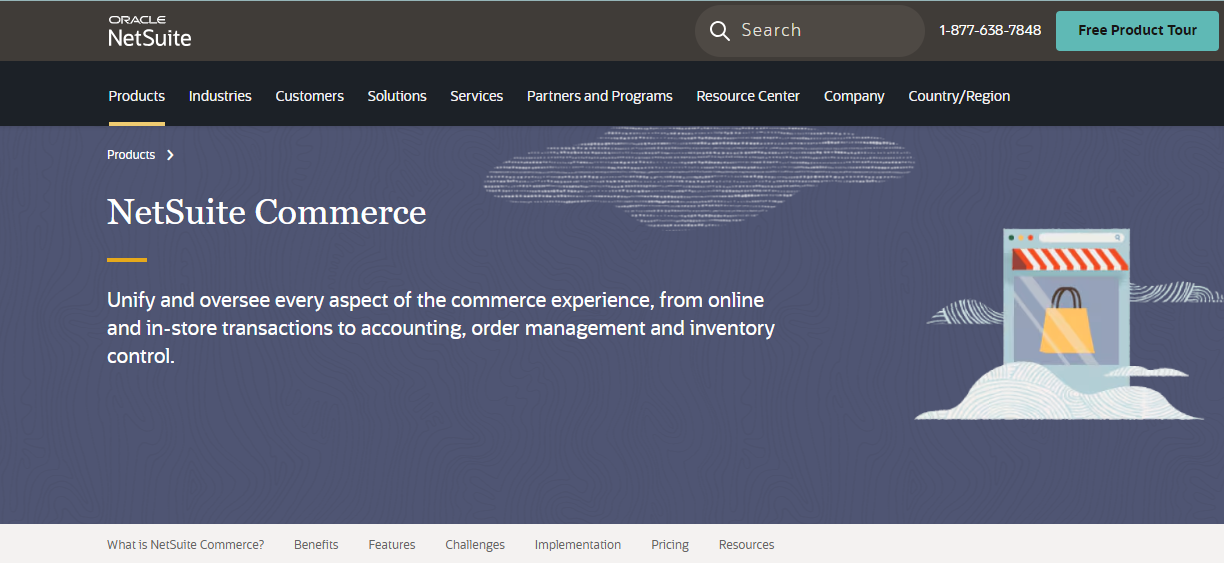
NetSuite Commerce offers a powerful solution for distributors looking to manage their B2B and B2C eCommerce operations under one roof. Here’s what makes it stand out:
- Unified Platform: NetSuite Commerce integrates seamlessly with your existing NetSuite ERP system, providing a single source of truth for inventory, customer, and order data. This eliminates the need for complex integrations and data silos, leading to a more streamlined operation.
- B2B & B2C Capabilities: Cater to both B2B and B2C customers with features like self-service portals for B2B buyers, customizable pricing structures, and consumer-friendly online storefronts.
- Real-Time Inventory Visibility: NetSuite Commerce provides real-time inventory visibility across all channels, ensuring accurate stock levels and preventing overselling.
- Order Management Efficiency: Automate order processing, fulfillment, and returns for improved efficiency and faster delivery times.
- Scalability for Growth: The platform scales with your business, accommodating increasing order volumes and product complexity as you grow.
PrestaShop

For distributors seeking a cost-effective and customizable eCommerce platform, PrestaShop offers a compelling solution. Here are some key features that make it attractive:
- Free and Open-Source: PrestaShop is a free, open-source platform, making it a budget-friendly option for distributors of all sizes. The open-source nature allows for extensive customization to fit your specific needs.
- Scalability and Flexibility: PrestaShop can handle a wide range of product catalogs and order volumes, making it suitable for businesses of all sizes. A vast marketplace of modules and themes allows you to extend functionality and personalize your storefront.
- Built for B2B and B2C: PrestaShop caters to both B2B and B2C sales with features like tiered pricing structures, customer group management, and self-service portals for B2B buyers.
- Large Community and Support: PrestaShop boasts a large and active community of developers and users, offering support and resources to help you get the most out of the platform.
What are the common challenges faced by Distributors?
Inventory management
Effective inventory management is a delicate balancing act. Distributors need to ensure they have enough stock to meet customer demand without having to hold too much inventory which impedes capital. Overstocking can lead to storage costs and potential obsolescence, while understocking can lead to out of stock and dissatisfied customers.
Complex supply chain
Distributors often work with a network of suppliers, manufacturers and logistics partners. Coordinating this complex supply chain while maintaining quality and timely deliveries can be challenging. Any disruption along the chain, such as delays or shortages, can ripple through the entire process.
Customer relationship management
Building strong and lasting customer relationships is essential. Distributors must understand their customers needs, preferences, and weaknesses of their customers to provide solutions. Balancing personalized service with the need for scalability as the customer base grows is a challenge. For Magento users, extensions like reward points and gift cards from Mageplaza can help strengthen loyalty and retention by allowing you to reward repeat purchases, offer flexible gifting options, and create ongoing incentives
Technological adaptation
The rapid pace of technological development presents both opportunities and challenges. Distributors need to stay current with technological trends that can streamline operations, enhance customer experiences and improve efficiency. However, integrating new technologies while ensuring minimal disruption to existing processes requires careful planning and execution.
Competitive pricing and differentiation
The competitive landscape for distributors is intense, often leading to price pressures. Finding the right balance between offering competitive prices and maintaining healthy profit margins is challenging. Moreover, distributors must differentiate themselves beyond pricing, focusing on unique value propositions, exceptional customer service, and innovative offerings.
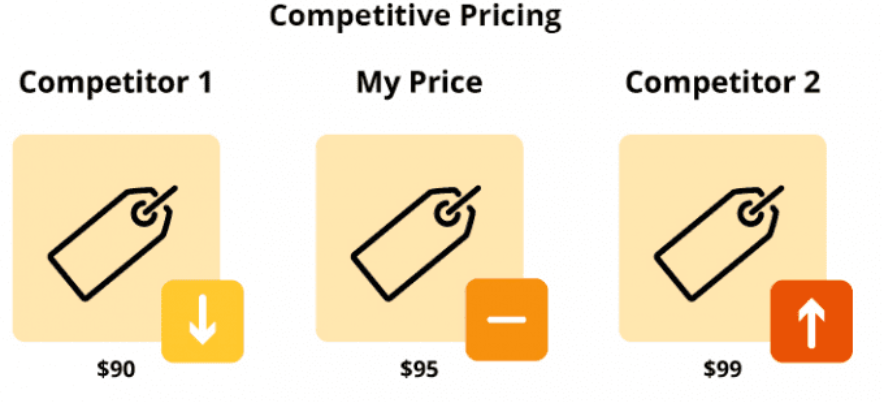
Each of these challenges requires strategic thinking, proactive planning, and the implementation of effective solutions. Distributors that successfully address these challenges can position themselves for sustainable growth and resilience in the ever-changing business environment.
6 essential requirements for an eCommerce Distributor
Robust online storefront
A B2B eCommerce for distributors must have a user-friendly and visually appealing online storefront. This includes clear product categorization, easy navigation and high quality product images. A well-designed storefront enhances the user experience and encourages visitors to explore and make purchases. A strong storefront not only showcases your products but also reflects your brand’s professionalism, credibility, and commitment to customer satisfaction.
Advanced search function
Implementing a powerful search feature is important. Customers can find products quickly and accurately using keywords, filters and sorting options. Efficient search functionality saves time and improves customer satisfaction. It’s a strategic tool that improves user engagement, increases conversions, and ultimately contributes to the success of your eCommerce business.
Seamless checkout process
The checkout process must be intuitive and logical. Customers should be able to add products to their cart, review their orders, input shipping and payment details, and complete the purchase with minimal friction. Any obstacle in the checkout process can lead to abandoned carts.
Secure Payment Gateways
eCommerce transactions involve sensitive customer data. Implementing secure and reliable payment gateways is essential to ensure the protection of customers’ personal and financial information. Displaying security badges and using encryption technology instills confidence in buyers.
Mobile responsiveness
In an era of mobile device dominance, the eCommerce platform must be responsive and optimized for a variety of screen sizes. A mobile-friendly design ensures that customers can browse and make purchases seamlessly on smartphones and tablets.

Personalization and customer insights
An eCommerce distributor should invest in tools that enable personalization. By analyzing customer data and behavior, distributors can offer personalized product recommendations, tailored discounts, and targeted marketing campaigns. This enhances the shopping experience and increases customer loyalty.
These essential requirements lay the foundation for a successful eCommerce distributor. Implementing these elements ensures a seamless and enjoyable shopping experience for customers while also providing distributors with the tools needed to manage orders, inventory, and customer interactions effectively.
5 steps for Distributors to build an eCommerce website
Embarking on the journey to establish an eCommerce presence demands a strategic and well-organized approach. For distributors, the field of eCommerce offers boundless potential, but success depends on meticulous planning, clear goals, and a dedicated team. Here are five essential steps that distributors should follow to pave the way for a thriving eCommerce venture:
1. Develop your project requirements
The journey begins with a comprehensive understanding of what your eCommerce project entails. Define your project scope, objectives, and timeline. Determine the scale of your online store, the range of products you intend to offer, and the key functionalities required. This step acts as a roadmap for the entire project.
Learning from your competitors
Research your competitors’ eCommerce websites to gain insights into their strengths, weaknesses, and strategies. This analysis helps you identify gaps in the market, understand customer expectations and refine your unique value proposition.
Choose your bestsellers
Identify your best-selling products or those with high demand potential. These products will serve as your flagship offerings, attracting customers and generating initial revenue.
Your directory structure
Organize your product catalog into logical categories and subcategories. A well-structured catalog simplifies navigation for customers, making it easier for them to find what they are looking for.
Tax accounting
Understand the tax implications of selling online in different regions. Different jurisdictions have different tax regulations, so make sure your eCommerce platform can calculate and display taxes correctly to your customers.
Implementation planning
Review your order fulfillment process carefully. Will you handle shipping in-house or partner with a third-party logistics provider? Ensure a streamlined process from order placement to delivery.
Review Your Payment Options
You need to evaluate and integrate various payment options to suit customer preferences and ensure secure transactions. This includes credit/debit cards, digital wallets, and potentially alternative payment methods.
2. Identify potential obstacles
Identifying potential obstacles is an important step in the process of building and launching an eCommerce venture. Anticipating challenges and barriers early on allows you to develop strategies to mitigate their impact and ensure the smooth execution of your project. Here are some common potential obstacles that distributors might face when building an eCommerce website:
Technical Challenges
Implementing and maintaining an eCommerce website involves various technical aspects, such as web development, hosting, and integration of third-party tools. Technical challenges might include website downtime, slow loading speeds, compatibility issues with different devices and browsers, or errors in the checkout process. Addressing these challenges requires a skilled development team and ongoing technical support.
Regulatory Compliance
B2B eCommerce of distributors involves compliance with various regulations and legal requirements, such as data protection laws, consumer rights, and tax regulations. Failure to comply with these regulations can lead to legal consequences and damage your reputation. It’s essential to research and understand the specific regulations that apply to your industry and geographic markets.
Competition and Market Saturation
Entering the eCommerce landscape means competing with established players and potentially facing market saturation. Standing out in a crowded marketplace requires a unique value proposition, strong branding, and effective marketing strategies. Conduct a thorough analysis of your competitors and identify gaps in the market that you can exploit.
User Experience (UX) Challenges
A poor user experience can lead to high bounce rates and abandoned carts. Common UX challenges include a confusing checkout process, navigation difficulties\ and slow website responsiveness. Conduct user testing and gather feedback to identify and resolve UX issues to improve customer satisfaction.
Marketing and Visibility
Building an eCommerce website is just the first step; attracting visitors and converting them into customers requires effective marketing strategies. Gaining online visibility through search engine optimization (SEO), social media, and paid advertising can be challenging. It’s important to allocate resources to marketing efforts to drive traffic to your website.
3. Develop goals for your eCommerce website
Set clear and measurable goals for your eCommerce website. These goals could include targets for sales revenue, customer acquisition, conversion rates, and website traffic. Having well-defined objectives keeps your team aligned and motivated. Here are some key goals to consider when developing your eCommerce website:
Increase Sales Revenue
One of the primary goals of any eCommerce website is to generate sales and revenue. Set specific targets for monthly or annual sales figures that align with your business growth projections. This goal can be further broken down into segments based on product categories or customer segments.
Improve Conversion Rate
The conversion rate is the percentage of website visitors who complete a desired action, such as making a purchase or signing up for a newsletter. Improving your conversion rate signifies that your website is effectively persuading visitors to take action. Set a target for your desired conversion rate and continuously optimize your website to achieve it.
Enhance Customer Engagement
Engaged customers are more likely to become loyal repeat buyers. Aim to increase the average time spent on your website, the number of pages visited per session, and the engagement with interactive elements such as product videos, blog posts, and user-generated content.
Expand Customer Base
Growing your customer base is vital for sustained success. Set goals for increasing the number of registered users or email subscribers. Implement strategies such as offering incentives for newsletter sign-ups or referrals to attract and retain new customers.
SEO Visibility
SEO is vital for attracting organic traffic to your website. Set goals to improve your website’s search engine ranking for relevant keywords. Monitor your website’s organic search traffic and track keyword performance over time.
Monitor KPIs
Set a goal to regularly monitor and analyze key performance indicators (KPIs) related to your website’s performance. These KPIs may include traffic sources, bounce rates, conversion rates, average order value, and customer lifetime value. Adjust your strategies based on the insights gained from these metrics.
Provide Excellent Customer Service
Exemplary customer service is a cornerstone of successful eCommerce ventures. Set goals for response times to customer inquiries, order fulfillment speed, and customer satisfaction ratings.
4. Build your eCommerce team
Assembling a capable and motivated team is pivotal to your eCommerce success. Depending on the scale of your venture, you may need professionals in areas such as web development, design, content creation, digital marketing, and customer service. Here are key roles to consider when building your eCommerce team:
eCommerce manager
This individual oversees the entire eCommerce project. They coordinate team efforts, set project timelines, and ensure that goals are met. A project manager ensures seamless communication among team members and oversees the implementation of strategies.
Web developers
Web developers are responsible for building and maintaining your eCommerce website. They handle the technical aspects, such as website design, coding, and ensuring functionality. Depending on your platform, you might need front-end developers, back-end developers, and full-stack developers.
UI/UX Designers User interface (UI) and user experience (UX) designers focus on creating an intuitive and visually appealing website. They design the layout, navigation, and interactive elements to enhance the user experience and guide visitors toward conversions.
Content creators
Content creators generate high-quality product descriptions, blog posts, videos, and other content that engages and informs your audience. They play a crucial role in conveying the value of your products and establishing your brand’s voice.
Digital marketers
Digital marketers handle various aspects of online marketing, including search engine optimization (SEO), pay-per-click (PPC) advertising, social media marketing, email marketing, and content marketing. They drive traffic to your website and optimize conversions.

Data analysts
Data analysts track and analyze website performance, customer behavior, and sales trends. They provide insights that help refine your strategies and make data-driven decisions to improve user experience and drive growth.
Customer service representatives
Customer service representatives handle customer inquiries, concerns, and order-related issues. They provide exceptional customer support to enhance customer satisfaction and build loyalty.
Inventory and fulfillment manager
For physical products, an inventory and fulfillment manager oversees stock levels, manages suppliers, and ensures timely order fulfillment. They play a crucial role in maintaining smooth operations and avoiding stockouts.
Analytics and reporting specialist
This role focuses on collecting and analyzing data related to website performance, customer behavior, and marketing campaigns. They generate reports that provide insights into areas for improvement.
IT Support
IT and technical support professionals ensure the stability and security of your eCommerce platform. They handle issues related to server maintenance, security patches, and technical troubleshooting.
5. Choose your eCommerce technology
Choosing the right technology platform is a pivotal decision. Assess different eCommerce platforms based on factors such as scalability, features, customization options, and integration capabilities. Select a platform that aligns with your project requirements and future growth plans. Here are some popular B2B eCommerce for distributors platforms that you can consider:
Shopify
Shopify is a user-friendly and widely used eCommerce platform known for its simplicity and flexibility. It offers a range of themes and customizable templates, making it suitable for businesses of all sizes. Shopify provides built-in hosting, security features, and a variety of plugins and apps to extend functionality.
Key Features:
- User-friendly interface
- Abundant app store for extended features
- Secure and PCI compliant
- Responsive design for mobile optimization
- Multiple payment gateways
- Integrations with third-party tools
Considerations:
- Monthly subscription fees
- Customization might be limited for advanced needs
- Transaction fees for third-party payment gateways
WooCommerce
WooCommerce is an open-source eCommerce plugin built for WordPress websites. It’s highly customizable and offers a wide range of themes, extensions, and plugins. This platform is ideal for businesses looking for full control over their online store within the WordPress ecosystem.
Key Features:
- Seamless integration with WordPress
- Extensive customization options
- Scalable with various plugins and themes
- Integrated blogging capabilities
- No transaction fees (though you may have payment gateway fees)
Considerations:
- Requires a WordPress website and hosting
- Managing plugins and updates might require technical knowledge
- May require additional paid extensions for advanced features
Magento
Magento is a robust open-source platform suitable for businesses with complex needs or large product catalogs. It offers high levels of customization and scalability, making it ideal for enterprises and those seeking complete control over their website’s features and appearance.
Key Features:
- Highly customizable with advanced features
- Scalable for large catalogs and high traffic
- Flexible content management
- Rich reporting and analytics
- Extensive community and third-party extensions
Considerations:
- Requires technical expertise for setup and customization
- Higher development and maintenance costs
- Resource-intensive platform
BigCommerce
BigCommerce is a hosted eCommerce platform that offers a balance between ease of use and customization. It provides a range of built-in features, security, and scalability, making it suitable for businesses of varying sizes.
Key Features:
- Built-in features for SEO, marketing, and analytics
- User-friendly interface
- Secure and PCI compliant
- Scalable for growth
- Multiple payment gateways and integrations
Considerations:
- Transaction fees for some plans
- May require advanced plans for certain features
Wix eCommerce
Wix is a website builder that also offers eCommerce capabilities. It’s known for its drag-and-drop interface and is suitable for smaller businesses looking for a simple online store solution.
Key Features:
- User-friendly drag-and-drop builder
- Wide range of templates
- All-in-one solution with hosting and security
- Integrated marketing tools
Considerations:
- Limited scalability for large businesses
- Less advanced customization compared to other platforms
- Limited third-party integrations
How to best serve your eCommerce customers?
- Train Your Internal Team: Ensure that your team is well-versed in using the eCommerce platform, resolving customer queries, and managing orders.
- Strategize Communication: Communicate the launch of the eCommerce platform to your existing customer base, highlighting its benefits and features.
- Responsive Customer Service: Establish timely and effective communication channels to address customer inquiries and concerns promptly.
- Implement Live Chat Support: Live chat provides real-time assistance to customers, enhancing their shopping experience and boosting conversions.

Conclusion
The journey of establishing an effective eCommerce presence for distributors is a multifaceted endeavor that requires meticulous planning, strategic thinking, and customer centric commitment. As the business landscape continues to evolve, using eCommerce is not only an option but also a necessity for distributors looking to expand their reach, optimize operations and cater to the demands of the digital age. In the ever-evolving B2B eCommerce for distributors landscape, the path to success is not static; it demands continuous improvement, adaptability, and a commitment to stay informed about emerging technologies and customer preferences. By embracing eCommerce, distributors can forge stronger connections with customers, expand their market reach, and establish themselves as leaders in a digital-driven marketplace. As the eCommerce journey unfolds, distributors equipped with the right strategies and insights are poised to thrive in this exciting and transformative era of commerce.


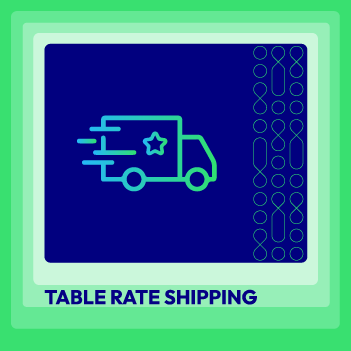





![Top 20+ Must-have Shopify Apps for 2025 [Free & Paid] - Mageplaza](https://cdn2.mageplaza.com/media/blog/must-have-shopify-apps/top-must-have-shopify-apps.png)
![[2025 Updates] Top 10+ Upsell Apps for Shopify - Mageplaza](https://cdn2.mageplaza.com/media/blog/best-upsell-shopify-app/cover.png)